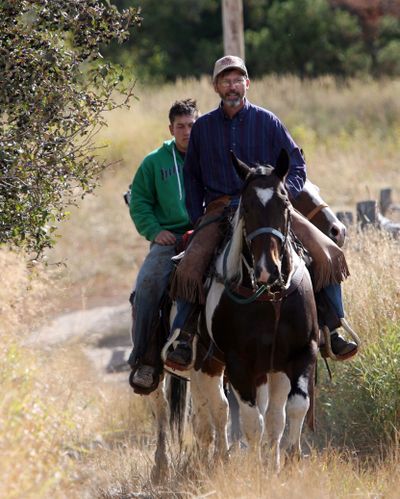Idaho Supreme Court rules against Rammell
Rancher challenged shoot-to-kill order

BOISE – The state Supreme Court on Friday upheld a 2006 shoot-to-kill order that authorized state game wardens to pursue a herd of domestic elk that escaped from an eastern Idaho hunting farm.
The unanimous decision likely marks the end of former elk rancher Rex Rammell’s legal fight that stems from one of Idaho’s most colorful wildlife controversies of the past decade.
Rammell had challenged the state’s right to shoot a person’s private property – in this case, dozens of trophy bull elk that Rammell had been saving for paying hunters before they bolted through a fence at his Chief Joseph elk preserve just west of Yellowstone National Park.
Justices unanimously upheld an earlier 4th District Court ruling, concluding the state was legally authorized to take Rammell’s escaped elk. The elk had been on the loose for at least 34 days – well after the seven-day limit that Idaho lawmakers had given elk ranchers to recapture their animals before they could be killed without liability.
“All the requirements of Idaho code … were satisfied in this case, authorizing the State to legally take the Rammells’ escaped domestic elk without liability,” Justice Jim Jones wrote.
Rammell, now 51, unsuccessfully sought to capitalize on the furor over the case to launch a political career. He lost a 2008 contest for a U.S. Senate seat against then-Gov. Jim Risch, who gave the shoot-to-kill order, and also lost in a 2010 run for governor.
After a third failed political bid – he lost a 2012 GOP primary for the state Legislature in Idaho County – Rammell moved to Wyoming in June to work as a veterinarian. Efforts to reach him Friday were unsuccessful.
Risch told the Associated Press he had remained confident all along that the decision he made as governor would be affirmed.
“We worked on the decision for some time and examined all the facts and looked at it from all directions,” he said Friday.
Exactly how many elk escaped has never been determined, but the best estimate is about 135 animals. Rammell recaptured 61 animals; hunters killed 43 of them. Thirty-one were never caught, so they or their progeny may still be on the loose.
In September 2006, Risch had the Idaho Department of Fish and Game authorize the hunt for Rammell’s animals on grounds the elk could potentially breed with wild animals or spread disease – something Rammell always denied.
At the Supreme Court hearing in August, Rammell’s lawyer argued the state abused the seven-day law.
The rancher contended it meant only that an elk rancher who does not recapture his escaped elk in that time period has no legal recourse if a licensed hunter just so happens to kill one during the regular hunting season.
But attorneys defending Idaho argued the state could legally kill any domestic elk beginning on the eighth day.